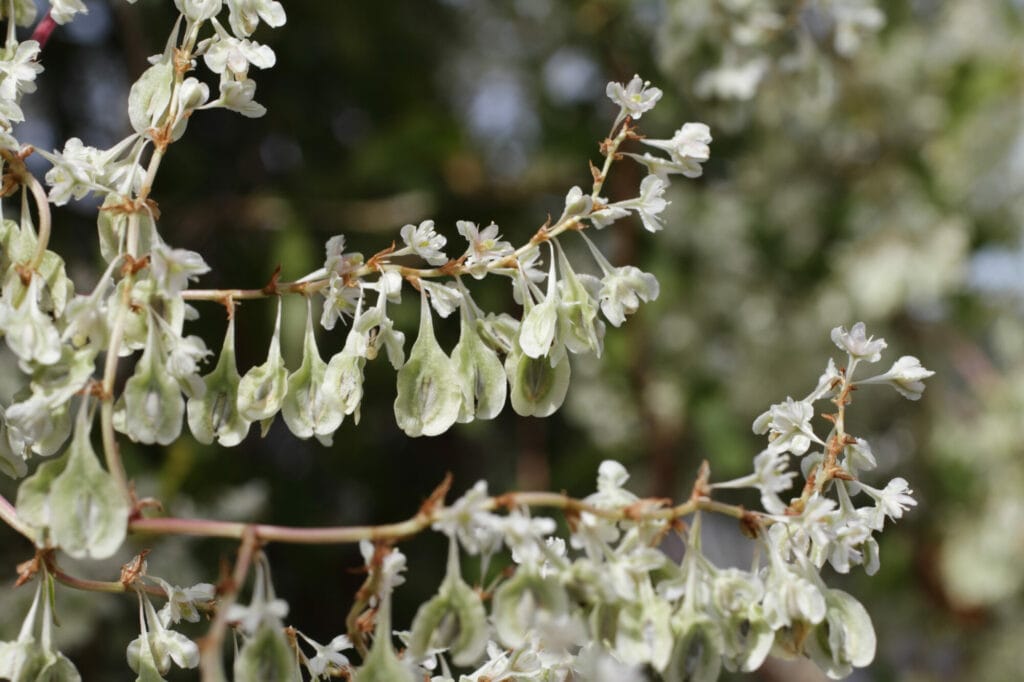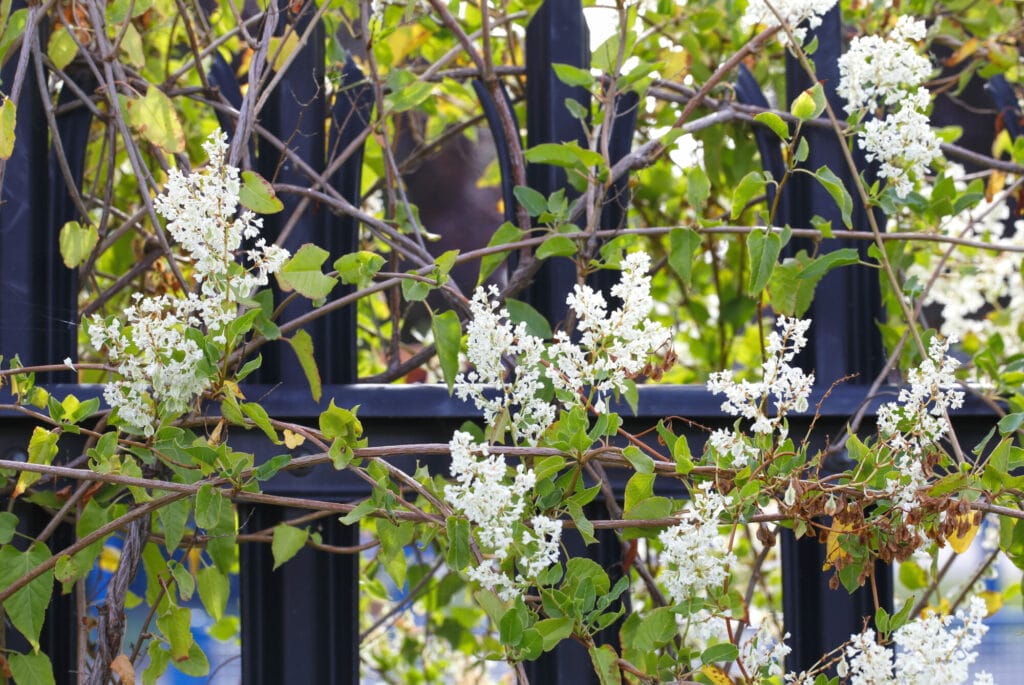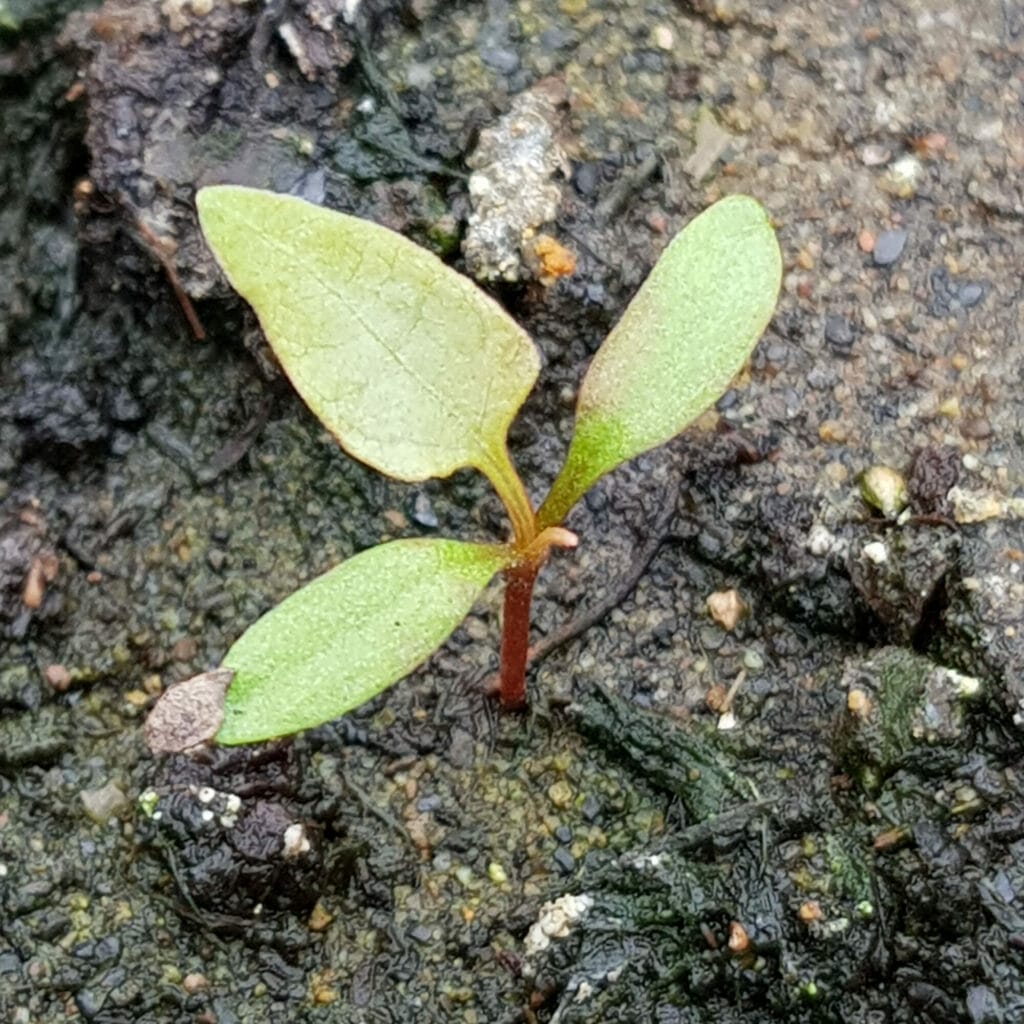Russian vine, is a botanical troublemaker commonly known as ‘Chinese fleece vine’ and ‘Silver lace vine’, that has potential to become a persistent UK issue. Its rapid growth characteristic, that’s earned it the nickname ‘mile-a-minute,’ is one of the main Russian vine problems. Introduced from Asia in the late 19th century, Russian vine, scientifically known as Fallopia baldschuanica, typically demonstrates its invasive characteristics in urban areas. Known for overpowering native garden plants, its broader impact on UK ecosystems is also being monitored. It’s closely related to Japanese knotweed, and sometimes a plant mistaken for knotweed, the flowers and leaves look a little alike. Whilst it doesn’t pose the legal implications of its relative, Russian vine is tricky to get rid of and poses challenges for conservationists and gardeners.
Below, information has been provided that will guide in Russian vine identification, including appearance differences of Russian vine in winter. Following discussion of important plant legislation, we’ll look at how to get rid of Russian vine, helping to reduce its UK impact.
What does Russian vine look like?
Spreading speedily to shade and swamp other plants, Russian vine is certainly something to watch out for. It can grow to a towering 12 metres high, and span 8 metres.
Though similar to Japanese knotweed with its heart-shaped leaves and delicate white flowers, there are a few features that distinguish Russian vine. For instance, Russian vine leaves are more arrow-shaped, even though Japanese knotweed and Russian vine flowers look alike.
As suggested by its name, Russian vine further differs from Japanese knotweed by the way it grows. Russian vine stems twist and create tendrils, twining around and choking surrounding plants. This combined with the leaf shape gives Russian vine likeness to bindweed (Convulvulus arvensis), also a perennial climber. A key difference is the flowers: bindweed has larger, trumpet-like flowers coloured white or pink, compared to Russian vine flowers which are small and white.

Russian vine (Fallopia baldschuanica) flowers close up iStock/Whiteway
Despite these similarities, accurate Russian vine identification, aided by visual cues and photographs, can help distinguish it from other species.
Russian vine in winter
Identifying Russian vine in winter can be challenging as being a perennial species, Russian vine sheds its leaves during this season. It flowers during summer and early autumn and has fruit of a few millimetres in size toward the end of winter, so these features cannot help with Russian vine identification in the colder months.
The easiest way to distinguish Russian vine in winter from other perennial climbers with vine-like stems is its woody base, which remains intact. While it can survive in temperatures as low as -20°C, prolonged exposure to frost may affect its survival. Nonetheless, its robust rhizomes enable easy regeneration, making it a persistent nuisance in unwanted areas.
Is Russian vine illegal in the UK?
Put simply, no, Russian vine is not illegal in the UK. But it is still an unquestionably aggressive plant with invasive characteristics.
When answering the question, is Russian vine illegal in the UK, it is significant that it is not a Schedule 9 listed plant. In fact, it’s neither listed as a ‘Species of special concern’, or under Schedule 9 of the Wildlife and Countryside Act 1981. Many similar species are, namely the various species of the Japanese knotweed family.
However, its invasive tendencies are a concern amongst environmental agencies, which monitor its spread. While it may not be subject to legal restrictions, its uncontrolled growth could lead to ecological disruptions, necessitating proactive management strategies.

Russian vine (Fallopia baldschuanica), climbing up a fence in Mitcham, Surrey iStock/Whiteway
Russian vine problems
We have already discussed how Russian vine can have an impact on an area’s biodiversity, but let’s delve into this deeper and consider further Russian vine problems.
One issue is name confusion. Both Fallopia baldschuanica (Russian vine) and Persicaria perfoliate (Asiatic tearthumb) are sometimes referred to by the common name, ‘mile-a-minute.’ As it happens, Asiatic tearthumb is listed by the GB Non-native Species Secretariat (NNSS), an organisation tackling the problem of non-native species in the UK, as a ‘Species of special concern‘.
Misidentifying Russian vine as this listed species may lead to the NNSS being wrongly notified of a ‘Species of special concern,’ and although Russian vine overpowers native plants, there is not currently any legislation against it, as we have explored.
Perhaps one of the greatest Russian vine problems, aside from name confusion, is its capability to produce a hybrid knotweed by pollinating the female flower of Japanese knotweed.
Hybrid knotweed
In South Wales, scientists from Swansea University have discovered this hybrid plant near Cardiff. Commonly known as Connolly’s knotweed or rail-yard knotweed, they note that while this hybrid knotweed is rare in the UK at the moment, it is being increasingly spotted across Europe.
Its leaves are small and thin, and resemble Russian vine leaves. Hybrid knotweed plants form dense bushes when they are mature, and so can, like Russian vine, push out native species. The hybrid variant exhibits enhanced invasive traits and poses a greater threat to native biodiversity.

Hybrid knotweed, also known as Connolly’s knotweed image source: Dr Sophie Hocking (Swansea University)
Indeed, when hybridisation takes place, Japanese knotweed produces significant amounts of seed. Though seed germination rates are currently low, this may change. An increasingly warm climate provides better conditions for the hybrid knotweed to survive, allowing Japanese knotweed to thrive as more seeds germinate.
Crucially, Russian vine’s presence in the UK is likely to have greater implications for the future.
How to get rid of Russian vine
Having looked at how to identify Russian vine and the legal matters surrounding the plant, you may still be wondering how to get rid of Russian vine, whether it be overtaking your garden or affecting your workplace.
Managing Russian vine typically takes a multifaceted approach, including manual removal, chemical treatments, and environmental restoration efforts.
Cutting back the vine as close to the ground as possible during winter or early spring and using glyphosate-based herbicides can help weaken its growth. You may need to apply the herbicide a few times on any regrowth to get rid of the plant entirely.
In cases where control measures prove ineffective, seeking assistance from an invasive weed specialist may be necessary. Their expertise and tools can help address severe infestations and prevent further spread.
For further support with Russian vine identification and management, contact our team at PBA Solutions today on 0203 174 2187 or 01202 816134.
Russian vine climbing plant (Fallopia baldschuanica) flowers and leaves
Lead image iStock/PFMphotostock

